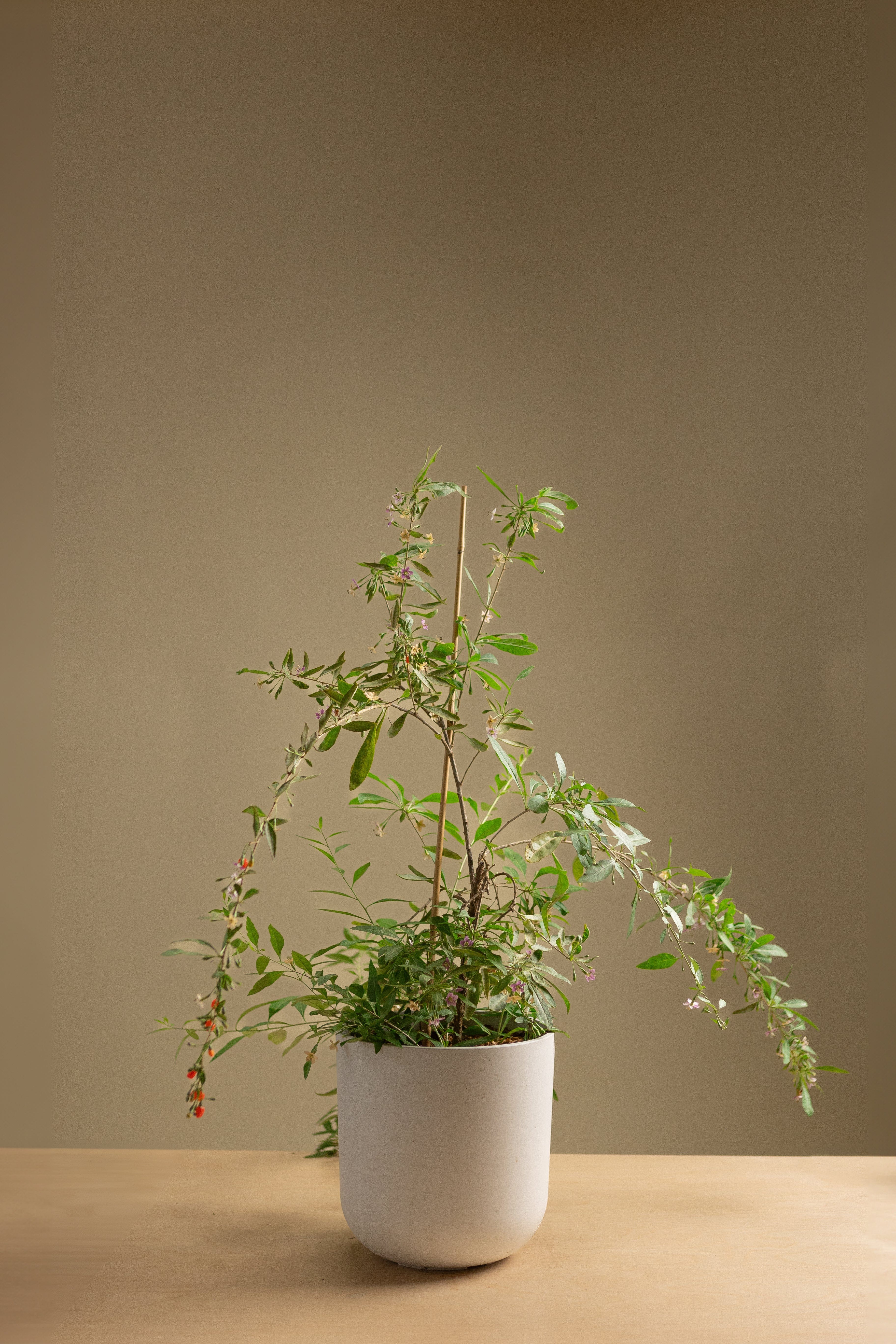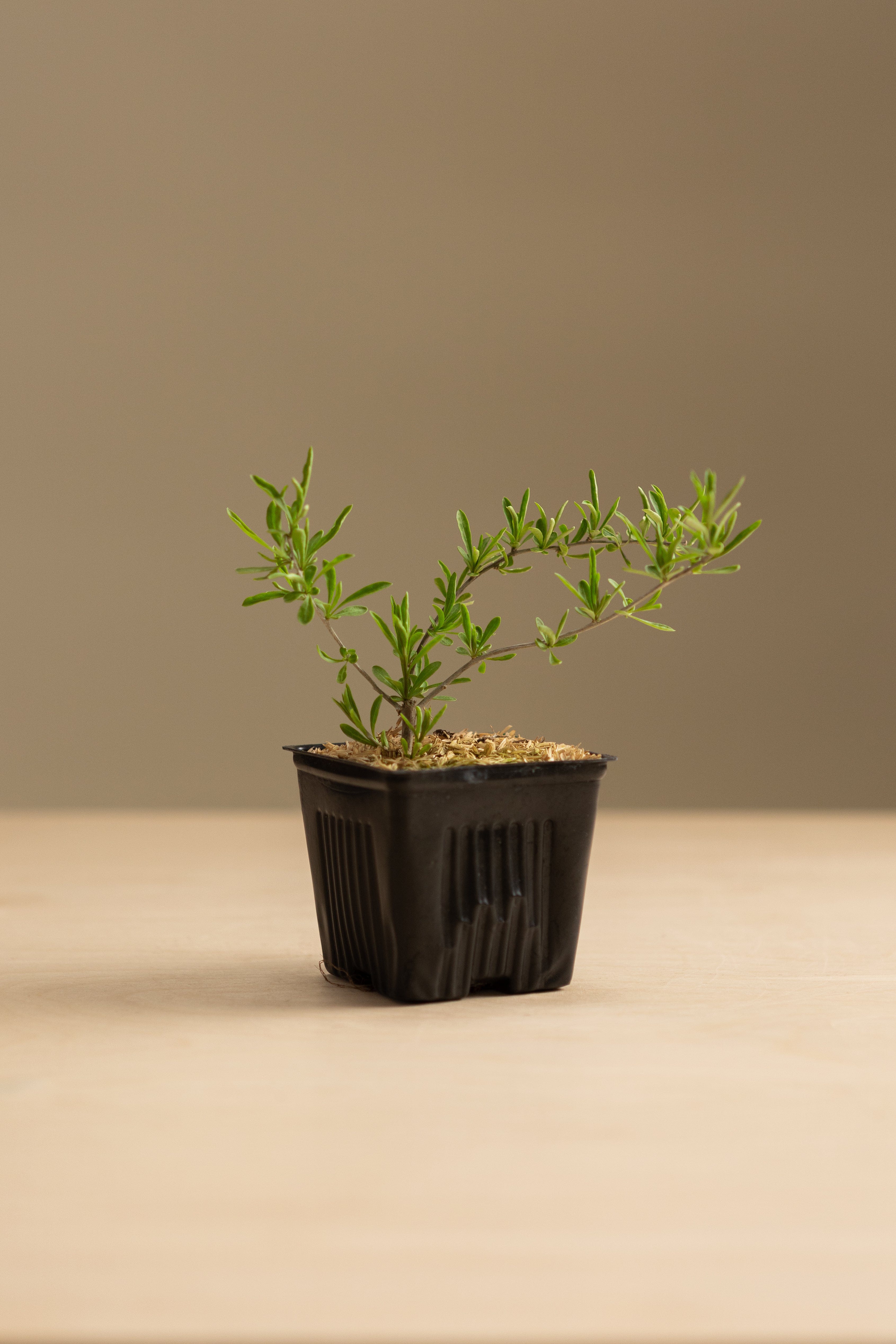






Gogi Berry
Native to China and also known as Wolfberry Vine, these sweet and nutritious berries are eaten fresh, juiced or dried like raisins. It grows great on a trellis, or makes a beautiful fountain-shaped bush if trained through a tomato cage.
The light purple, bell-shaped flowers bloom in May and continue throughout the summer. Starting the third year, flowers are followed by neon orange-red berries. Somewhat tart but with a subtle flavor, the flavor is often described of the sweet version of a cherry tomato. When dried, they are even sweeter.
SELECT YOUR KIT

PLANT ONLY:
$0.00

POTTING ESSENTIALS KIT:
$69.99

COMPLETE GROWER KIT:
$154.99
Plant Only + Complimentaries


Goji Berry + Potting Essentials Kit


Goji Berry + Complete Grower Kit


DO YOU WANT TO INSURE YOUR PLANTS?
Get plant insurance to guarantee a free replacement plant if yours dies within the first year. Read more about plant insurance here..

Where do I grow best?
How to care for me:

Self-Fertile

Partial to Full-Sun

Water

Soil Nutrients

Dormancy

Harvest

Pruning

Pests and Disease
Growing in Less Ideal Climates
While the region indicated on the map above specifies where this plant grows best, the virtue of growing plants in pots is that, with a little elbow grease, you can create your own environment. These are our tips for anyone attempting to grow alpine strawberries in other climates.

Colder Regions

Hotter Regions
